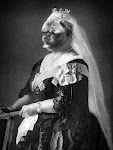A full program and a festival
atmosphere was at hand this weekend with the Kansas City Symphony,
Michael Stern Music Director and conductor. After much preparation
and a couple of solo work outs, the newly installed Casavant op 3875
pipe organ was ready for its debut with the orchestra. Paul Jacobs,
probably the country's premier organist (had to chuckle when I heard
a lady down the row from me wonder if Jacobs is as good as E. Power
Biggs was... at least she did not say Virgil Fox), had the honor of
introducing the organ to the subscription series in the juicy and
deservedly popular Saint-Saëns Symphony # 3 “Organ”. Also on
hand was super-star violinist Joshua Bell as soloist in the Brahms
Violin Concerto in D. Beginning the extensive program was the world
premiere of Stephen Hartke's “Muse of the Missouri”.
Hartke's “Muse of the Missouri”so
named after the fountain on Main between 8th and 9th
Streets, was the third and final installment of works commissioned to
commemorate the opening season of the Kauffman Center for the
Performing Arts. All three, Chen Yi's “Fountains of KC” and
Daniel Kellogg's “Water Music” took their inspiration from the
many fountains that grace Kansas City. Of the three compositions,
Hartke's was for me the least successful. As with Respighi's famous
fountains, the work seeks to musically depict not only the fountain
but the surrounding landscape. Although complete with flowing
passages evoking the relentless flow of the fountain and the Missouri
River, a jazzy interlude and metropolitan hustle and bustle, “The
Muse of the Missouri” was even more generically contemporary than
Kellogg's piece. Hartke's use of a banjo could have been almost
stereotypically “down home country” and thus condescending, but
he used to instrument deftly and coloristically to great effect, much
as Mahler did with the guitar and mandolin in the 7th
symphony.
Yes, it is time for me to say something
nice about Brahms. For a performance of Brahms to be enjoyable, the
musicians should take the old granny out of her rocker and give her a
nice romp through the park. Stern and soloist Joshua Bell did just
that in the Violin Concerto in D op. 77 which filled out the first
half of this weekend's program.
What can kill a performance of this
huge work is a too long and lazy first movement that makes the other
two seem like trifling encores. Bell's perfect intonation and
incredible technique combined with Stern's swift (but really not
rushed) tempi and attention to the contrasting lyrical and rhythmic
episodes really moved the work along allowing the music to sing and
flow effortlessly. The imposing first-movement cadenza, in this case
composed by Bell, was to my ears a bit jarring and too over-the-top,
no matter how technically brilliant it was. This was, for sure, gutsy
and visceral Brahms, full of exquisitely executed double-stops, and
glorious gypsy dance rhythms in the finale well contrasted with a
full but never overwrought central slow movement. The latter
mentioned movement opened with a beautifully limpid oboe solo setting
the stage for Bell's freely expressive performance. As heard in the
intermission chatter, some patrons felt Bell “sawed” his way
through the Brahms and was “rough and too fast”. For
traditionalists, perhaps that is so. But to my ears, Bell brought the
old gal to life. Bell's encore, a set of variations on “Yankee
Doodle” were simply super-human. The crystal clear sul ponticello
passages were simply indescribable.
And then a second half that was a
blockbuster in and of itself.
To fully appreciate not only its power
but also its subtlety, the Saint-Saëns Organ Symphony must be heard
by a fine pipe organ in a grand hall. Recordings, as many celebrated
and “demonstration quality” (we used to call them “lease
busters”) as there are, do not capture the essence of Saint-Saëns'
sound palate. Instead of a recording's impenetrable sonic wall, in a
concert hall one can hear the subtle tension of the organ chords in
the 2nd part, not just underpinning the orchestra but how
they actually are an integral and never overwhelming part of the
fabric. At the same time, a listener can fully experience how the
organ and orchestra chords meld and progress into the same movement's
stately chorale. Same with the grand final movement, the organ is not
just a jarring intruder, but again an integrated part of the whole
grand scheme.
I also find it amusing that recordings
of this work almost always feature a star performer in what is not
all that flashy a part. Of the four movements, or sections actually,
the organ appears in only two. So as to make amends and for us to
fully experience Mr. Jacob's artistry, the second half began with a
solo performance of the Elgar Pomp and Circumstance Military March #
1 in D, known to graduates everywhere. Jacob gave the Casavant a
fine workout in most rousing and pleasing performance of this
chestnut.
Sadly, many performances drag the first
section to almost a stand still, but Stern chose a stately yet gently
propulsive tempo that let us luxuriate in the strings radiance just
long enough. The scherzo section requires some rhythmic crispness
from the strings and winds to make its proper effect and Stern and
the symphony did just that. When the organ appears in the slow 2nd
section, Casavant Frères opus 3875 is roundly voluptuous and sweet
but never sticky. In the final section, she wakes up the audience
with her glorious, commanding voice. The vast forces combined in a
finely paced movement thankfully devoid of the tendency to rush the
final chords and tympani cadenza in a frenzy of un-coordinated sound
and fury. A fitting introduction of this magnificent organ into the
symphony's subscription programs. Now, Maestro, give us a redo of the
Berlioz “Te Deum” with a real organ.



No comments:
Post a Comment